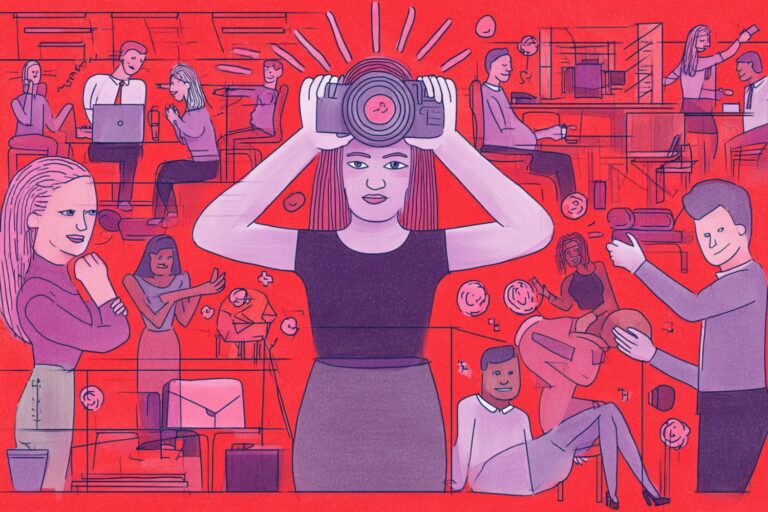Still training teams with static PDFs and one-off Zoom sessions?
You’re not alone. And it’s costing you time, consistency, and clarity.
Employees forget what they read. HR drowns in repetitive questions. Enablement decks gather dust. That’s not just a bad stat. It’s a broken system.
The good news? Smarter, scalable training alternatives exist.
This post breaks down 8 modern methods that cut ramp time, boost engagement, and let your content train itself.
Ready to train smarter, not harder? Let’s dive in.
1. On-the-Job (OJT) Microlearning with Real-Time Q&A
Best for: HR, Sales Enablement, Customer Success
Imagine if training didn’t interrupt work, but happened during it.
That’s the power of on-the-job (OJT) microlearning. Instead of cramming hours of content into a new hire’s first week, you embed short, actionable learning moments right where they’re needed; within the actual flow of work.
But here’s where it gets better: combine it with real-time Q&A.
With tools like Docustream, you can turn your existing onboarding docs, policy guides, or SOPs, into interactive explainers that employees can access in the moment. Got a question about time-off policies? Just ask. Need clarity on a sales playbook point? Get an instant, voice-enabled answer.
No more flipping through a 60-page PDF. No more waiting for a manager to respond.
HR Tip: Replace your static onboarding checklist with a Docustream-powered explainer that new hires actually use.
Why this works:
- Contextual learning: People retain more when they learn while doing.
- Faster onboarding: New hires get answers as they go, not after an email thread.
- Less dependency: HR and enablement teams avoid answering the same questions repeatedly.
If you’re tired of being your team’s personal FAQ bot, this is where to start.
2. Interactive Video-Based Training
Best for: Compliance, Product Marketing, Onboarding
Traditional video training is better than PDFs but a static video still leaves a lot on the table.
Enter interactive video-based training: short, targeted videos layered with features like clickable chapters, in-video quizzes, and searchable Q&A. This approach engages learners and lets them find the answers they need instantly, without rewatching a 15-minute clip to find a single point.
Even better, platforms like Docustream take it a step further by transforming your internal documents into AI-powered video explainers. These aren’t just talking heads; they’re dynamic, voiceover-rich explainers with integrated Q&A that turn any doc into an on-demand tutor.
Why this works:
- Higher retention: Interactive content is more engaging and easier to digest.
- Self-paced learning: Employees can replay specific sections, skip ahead, or ask clarifying questions.
- Scales instantly: No need to schedule live sessions across time zones.
Where it shines:
- Compliance Training: Turn dry SOPs into conversational videos that explain each policy and log questions for audit trails.
- Sales Enablement: Repurpose product decks into short explainers reps can revisit before pitches.
- Customer Success: Convert onboarding guides into guided walkthroughs that clients actually finish.
Bottom line? Interactive video isn’t just more fun; it’s more effective, trackable, and scalable.
3. Simulation and Role-Play Exercises
Best for: Sales Enablement, Support Teams
Sometimes, the best way to learn is to do, without the pressure of real-world consequences.
Simulations and role-play exercises create safe environments where employees can practice real scenarios: responding to a customer complaint, handling a tricky compliance issue, or pitching a product to a tough prospect. The goal? Sharpen decision-making, communication, and critical thinking before it actually counts.
This method is especially powerful for roles that require interpersonal finesse, such as:
- Sales reps navigating objections
- Support teams de-escalating frustration
- Compliance teams testing response protocols
Why this works:
- Muscle memory: Repeated practice builds confidence and automaticity.
- Instant feedback: Learners see where they made mistakes and how to fix them.
- High engagement: It’s active learning, not passive consumption.
How to implement it:
- Live role-play via Zoom or in-person workshops: Great for team bonding but harder to scale.
- AI-based simulations or video prompts: More scalable and repeatable. Tools like Docustream can help set up explainers followed by scenario-based Q&A to simulate common challenges.
If your team faces real-world interactions that matter, simulations let them get it right before it matters.
4. AI-Powered Training Docs
Best for: HR, Compliance, Enablement
Let’s be honest: no one wants to read a 40-page PDF to figure out how to do their job.
But what if that same document could talk, explain itself, and even answer your questions?
That’s exactly what AI-powered training docs deliver. With tools like Docustream, you can convert your existing PDFs, SOPs, decks, and handbooks into interactive, voice-narrated, searchable experiences. Think of it like giving your training manual a brain.
Employees no longer need to hunt for the right section. They just ask questions and get answers instantly.
Compliance Bonus: Track who viewed what policy and log their questions in real-time.
Why this works:
- Self-service clarity: Employees solve their own questions without bothering HR or managers.
- Higher adoption: People actually use docs when they’re engaging and helpful.
- Trackable usage: See which sections get the most views or questions; perfect for iterating.
Use cases across the org:
- HR/People Ops: Turn onboarding policies into interactive explainers that new hires actually understand.
- Sales Enablement: Transform playbooks into smart assets that reps can search and absorb on their own.
- Compliance & Risk: Add Q&A logs and usage analytics to ensure employees understand policies, not just receive them.
AI doesn’t replace your training docs. It upgrades them into something usable.
Want to see how Docustream turns your static PDF into an AI explainer? Get started with your PDF here.
5. Peer-to-Peer Learning Platforms
Best for: All Teams (especially CS & Sales)
Some of your best training content already exists. It’s just stuck in someone’s head.
Peer-to-peer learning taps into your team’s collective expertise by making it easy for employees to share what actually works in their day-to-day jobs. Whether it’s how someone handles a tough customer, shortcuts in a sales tool, or a clever workaround in a policy, this is the gold your formal training usually misses.
Now imagine capturing all that, structuring it, and making it available to everyone without needing a content team to rewrite it.
That’s where tools like Docustream shine. You can upload tips, walkthroughs, or even screen-recorded workflows, and turn them into searchable knowledge assistants. Your best reps and support agents essentially become on-demand trainers for the rest of the team.
Why this works:
- Trust factor: People love learning from peers who’ve “been there.”
- Speed: No need to wait for official training material to catch up.
- Scalability: One tip recorded once can help 100 future hires.
How to implement it:
- Encourage team leads or high performers to record short clips or submit tips weekly.
- Use Docustream to wrap them in explainers with voiceover, highlights, and Q&A.
- Organize by topic, role, or task for easy access across the org.
Peer-to-peer learning is how modern companies scale wisdom, and not just information.
6. Gamified Learning Paths
Best for: HR, L&D, Compliance
Let’s face it: traditional training can feel like a chore. But when you add a little competition, reward, and progress tracking? Suddenly, it’s fun and surprisingly effective.
Gamified learning uses points, badges, leaderboards, and interactive challenges to turn training into a motivating experience. It’s not just about making things flashy; it’s about engaging people long enough for them to retain the knowledge that actually moves the needle.
And here’s the kicker: it works even better when paired with AI-powered explainers.
Imagine a gamified track where:
- You unlock a level by watching a Docustream explainer.
- You pass a quick Q&A checkpoint.
- You get a badge for completing a learning module.
Why this works:
- Increased completion rates: Gamification taps into our natural desire to finish what we start.
- Better engagement: Especially helpful for compliance, policy, or product training that might otherwise get ignored.
- Trackable progress: Know who’s falling behind before it becomes a problem.
Ideal for:
- HR and onboarding: Make first-week training more interactive and less overwhelming.
- Compliance: Reinforce key points with pop quizzes and progress incentives.
- Sales Enablement: Create certification-style learning tracks that reps want to complete.
Training doesn’t have to be a slog. Add a little game and watch learning take off.
7. Embedded In-App Learning
Best for: RevOps, Product, CS
The best training is the kind you don’t even notice. It’s just there when you need it.
Embedded in-app learning puts training directly into the tools your employees are already using. Whether it’s onboarding guidance inside a CRM, contextual tooltips in a dashboard, or interactive walkthroughs in a help desk system, this approach meets people exactly where the work happens.
No separate LMS login. No flipping tabs. Just instant help, in the moment.
Pair this with AI-powered doc-to-explainer tools like Docustream, and now even your most complex documents: sales playbooks, compliance SOPs, onboarding policies, can be accessible inside your workflow with a simple click or voice command.
Why this works:
- Just-in-time support: Employees don’t waste time searching or guessing.
- Higher adoption: People use the help they can see, especially if it’s one click away.
- Fewer support tickets: When learning is embedded, questions drop dramatically.
Implementation ideas:
- Embed Docustream explainers inside Confluence, Notion, or internal tools.
- Use overlays or chat-style interfaces that respond to user queries based on your own docs.
- Trigger learning modules based on user behavior (e.g., “First time using feature X? Here’s a walkthrough.”)
In-app learning isn’t the future. It’s what modern enablement looks like today.
8. Podcast-Style Explainers for Mobile Learning
Best for: Sales, Product Marketing, Executives
Training doesn’t have to happen at a desk.
In a world where attention spans are short and schedules are packed, podcast-style explainers offer a mobile-friendly way to train on the go. Whether employees are commuting, walking the dog, or taking a break, they can keep learning without staring at a screen.
This is especially effective for:
- Busy execs who never open the onboarding deck
- Sales reps who want to prep between meetings
- Field teams without consistent computer access
With tools like Docustream, you can turn your static documents or decks into audio-based explainers, complete with voiceovers and embedded Q&A. It’s like having a personal trainer for your training material, available anytime.
Sales Hack: Turn your playbook into an explainer reps can search before calls.
Why this works:
- Convenience: People can learn during dead time (commutes, workouts, etc.).
- Reinforcement: Listening to content after reading it improves retention.
- Accessibility: Great for teams with varied learning styles or limited screen access.
Implementation tips:
- Break up large decks or handbooks into short “episodes.”
- Add contextual examples and real-world stories to make it stick.
- Combine with a follow-up quiz or explainer link to reinforce key takeaways.
Your docs don’t need a redesign. They just need a voice.
Why Manual Training is Failing Modern Teams
Let’s call it what it is: manual training isn’t just outdated, it’s broken.
Static PDFs, live walkthroughs, and one-off slide decks might have worked when teams were smaller, co-located, and had weeks to ramp. But in today’s world of distributed teams, high-speed onboarding, and constant change, manual training is more of a bottleneck than a solution.
Here’s what’s going wrong:
It’s Time-Consuming and Resource-Heavy
- HR teams spend hours repeating the same policies.
- Sales enablement builds beautiful decks that no one reads.
- Managers lose productivity answering the same questions again and again.
It’s Inconsistent and Untrackable
- Each trainer explains things differently.
- No audit trail to see what was actually understood.
- Impossible to tell who’s ramping up and who’s falling behind.
It Doesn’t Match How People Learn Today
- Employees are used to instant answers, mobile learning, and video content.
- Sitting through a PDF or hour-long Zoom session? That’s not how knowledge sticks.
It’s One-Size-Fits-All
- A new hire in HR and a seasoned AE don’t need the same training but manual methods rarely personalize.
Bottom line? Manual training creates more work and less learning. If you want to scale onboarding, reduce support tickets, and create training that actually gets used, the answer isn’t more documents. It’s smarter ones.
And tools like Docustream give you that edge by turning your existing materials into dynamic, AI-powered learning experiences that meet people where they are.
How Docustream Fits into a Scalable Training Stack
You’ve seen the alternatives. Now here’s the secret to scaling them: you don’t need a dozen tools, custom LMS integrations, or a content team on call.
You just need Docustream.
Docustream turns your existing PDFs, presentations, SOPs, playbooks and even Notion pages into AI-powered explainers with:
- Voiceovers
- Smart Q&A
- Searchable navigation
- Usage analytics
No need to rebuild content from scratch. You upload. Docustream does the rest.
Here’s how it fits across teams:
For HR & People Ops:
- Convert onboarding docs and FAQs into interactive flows.
- New hires get instant clarity, and HR gets fewer repetitive questions.
For Compliance & Risk:
- Turn policies and SOPs into auditable explainers.
- Track who’s engaging and what they’re asking.
For Sales Enablement:
- Transform playbooks into smart assistants reps actually use.
- Ramp faster and reduce shadow support from managers.
For Customer Success:
- Make client onboarding more intuitive with welcome doc explainers.
- Support fewer tickets with searchable answers on demand.
For Product Marketing:
- Launch materials become explainers + podcasts.
- Internal alignment happens asynchronously and sticks.
Why it scales:
- No new platforms to learn: Works with what you already have.
- Instant upgrades: From doc to explainer in minutes.
- Built-in analytics: See who’s engaging, where they get stuck, and what they need more of.
Here’s a real example:
A 200-person SaaS company saw a 45% drop in HR support tickets and a 30% increase in sales ramp speed, all by transforming their most-used docs into Docustream explainers.
Smart training isn’t about doing more. It’s about making what you already have work harder and smarter.
Conclusion
Manual training had its moment but that moment is over.
Today’s teams need fast, flexible, and engaging ways to learn. Whether it’s answering policy questions, onboarding new hires, or prepping sales reps, the old playbook of PDFs, static decks, and live walkthroughs just doesn’t cut it.
You now have 8 powerful alternatives:
- On-the-job microlearning with real-time Q&A
- Interactive video-based explainers
- Simulation and role-play practice
- AI-powered, searchable training docs
- Peer-to-peer learning libraries
- Gamified learning paths
- Embedded in-app guidance
- Podcast-style mobile explainers
Each one is designed to scale with your business and deliver training that actually works.
So what’s next?
You don’t need to start from scratch. You don’t need to buy five new tools. You just need to take the training content you already have and make it smarter. Docustream helps you do exactly that.
Upload a doc. Get back an interactive, voice-narrated, AI-powered training experience in minutes.
Ready to see it in action? Get started with your first training doc here and we’ll turn it into a smart assistant, free. Your team will thank you.
FAQs
1. What are manual training methods?
Manual training typically involves in-person sessions, printed materials, static PDFs, or PowerPoint presentations delivered without interactivity or tracking.
2. Why are companies moving away from manual training?
Manual training is inefficient, inconsistent, and difficult to scale. It often results in low engagement and high support loads for HR or enablement teams.
3. What’s an AI-powered training doc?
It’s a smart document that includes voice narration, embedded Q&A, and searchable navigation built from your existing content using tools like Docustream.
4. Can I still use my existing training materials?
Absolutely. Docustream works by enhancing the documents you already have; no need to rebuild from scratch.
5. Is gamified learning only for junior employees?
Not at all. Gamification boosts engagement for all roles, including compliance and leadership, by making learning more interactive and goal-driven.
6. How can I track if employees are actually using training materials?
With Docustream, you get analytics showing usage, questions asked, and where people drop off so you know what’s working and what’s not.
7. What are the best training formats for hybrid or remote teams?
Interactive video explainers, podcast-style modules, and embedded in-app learning are all highly effective for distributed teams.
8. What’s the ROI of switching to smarter training formats?
Companies using Docustream report 30–50% faster onboarding, lower support volumes, and more consistent knowledge retention across roles.
tl;dr
- Manual training is outdated and ineffective.
- These 8 alternatives, from smart video explainers to gamified learning, offer better engagement and results.
- Tools like Docustream make it easy to upgrade your existing docs into dynamic, AI-powered training modules.
- Result? Faster onboarding, fewer support tickets, and scalable training that sticks.
- Book a free 20-minute pilot to see it in action.













